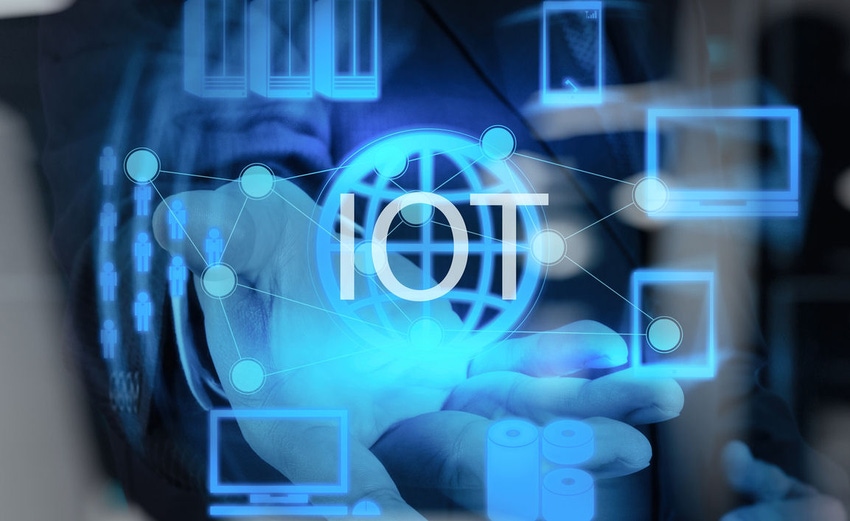Global connectivity and collaboration for an IoT future
IoT technologies and applications have been developed to such a stage that the main question being asked now is: how can service providers and businesses unlock the benefits of this connected world?
March 15, 2018

Telecoms.com periodically invites third parties to share their views on the industry’s most pressing issues. In this piece Daniel Kurgan, CEO of BICS SA/NV, argues that the full IoT opportunity will only be realised if there is global collaboration in the telecoms space.
The IoT has been a major discussion point amongst telcos for years, but it’s only more recently that we’ve started to understand how – and how much – IoT applications will benefit different industry sectors and power socioeconomic benefits. With huge potential for monetisation, investors will continue to pour money into IoT projects this year – worldwide spending is expected to hit $772.5 billion in 2018 – and a growing number of use cases will be trialled and deployed as a result.
IoT technologies and applications have been developed to such a stage that the main question being asked now is: how can service providers and businesses unlock the benefits of this connected world?
The M2M opportunity
For MNOs and MVNOs (which have established customer bases and, in the case, of the former, their own telecoms assets), monetising the IoT will involve not only providing connectivity for consumers and their devices, but delivering machine-to-machine connectivity (M2M) too. According to a recent report, the overall M2M connections market will be worth an estimated $27.62 billion by 2023, growing at a CAGR of 4.6% from 2017 to 2023.Yet most operators of this type have neither the experience and resources to optimise their networks for M2M connectivity, nor the management capabilities required for controlling and billing subscriptions.
Further along the chain, companies in vertical industries will be looking to leverage the IoT to expand their business and launch new services and products. These could include shipping companies and wearables manufacturers, as well as warehouse operatives wanting to automate processes or utilities companies introducing smart meters. However, these companies lack essential resources; a network to support deployments, roaming agreements with operators to allow for global connectivity, and often the time and capital needed to create and manage this architecture.
Enabling worldwide M2M connectivity
On both the operator and industry sides, entering the IoT will only prove a successful and strategic move if they can generate a strong ROI. This is unlikely to happen if projects are created and deployed in-house, from scratch. For operators, local connectivity is no longer enough; as an operator’s customers increasingly operate on a global stage, communication and data exchange must be on the same worldwide level.
This need for global connectivity is also increasingly becoming a priority for connected device OEMs, placing further pressure on telcos. With businesses around the world reliant on access to global markets to drive trade, and with exports from UK companies totalling £617 billion in 2017 alone, seamless, cross-border connectivity will be essential for connected device manufacturers to access global markets. Connected devices, infrastructure and vehicles must be ‘always on’ wherever these things are – or travel – across the world, without the complication of managing multiple roaming and network access requirements.
The value of collaboration
As operators look to ensure their networks are optimised for the IoT, we’ll therefore likely see a growing number of deals between MNOs/MVNOs and those with the reach and infrastructure needed to enable mass connectivity – including between both consumers and devices, and M2M – at scale. This will allow MNOs/MVNOs to offer new connectivity services to sectors entering the IoT market, including healthcare, automotive, manufacturing, logistics, security and insurance. Gaining mobile connectivity services will allow firms in vertical industries to achieve business goals, monetise the IoT, and deliver services to global customer and consumer bases reliably and cost-effectively.
Industry convergence and collaboration will be front-and-centre in 2018. Industries which once operated in relative siloes are now linked by a single common denominator which will form the backbone of digital transformation plans: global connectivity.
 Daniel Kurgan was appointed CEO of BICS SA/NV on March 2nd 2007 after being COO from July 1st 2006 onwards.He started his career as Contracts Manager at SABCA (biggest Belgian aerospace company, subsidiary of French Group Dassault), where he negotiated and managed major industrial sales, subcontracting and purchase contracts with customers like Boeing, Airbus, Aerospatiale (EADS), Asian governments, and suppliers like GEC Marconi and Litton.
Daniel Kurgan was appointed CEO of BICS SA/NV on March 2nd 2007 after being COO from July 1st 2006 onwards.He started his career as Contracts Manager at SABCA (biggest Belgian aerospace company, subsidiary of French Group Dassault), where he negotiated and managed major industrial sales, subcontracting and purchase contracts with customers like Boeing, Airbus, Aerospatiale (EADS), Asian governments, and suppliers like GEC Marconi and Litton.
Daniel joined Belgacom’s Carrier Division at the start of the carrier’s commercial operations in January 1997, where he held several positions including International Account Manager, Head of International Relations & Sales, Sales Director (domestic and international wholesale) and VP International Wholesale, in charge of Sales & Marketing, Buying & LCR, and Customer Service and Network. In 2005 Daniel was VP Commercial of BICS, and contributed to the spin-off of Belgacom’s international carrier business.Daniel graduated from the Solvay Business School of the University of Brussels.
Read more about:
DiscussionAbout the Author(s)
You May Also Like








.png?width=300&auto=webp&quality=80&disable=upscale)


_1.jpg?width=300&auto=webp&quality=80&disable=upscale)


.png?width=800&auto=webp&quality=80&disable=upscale)